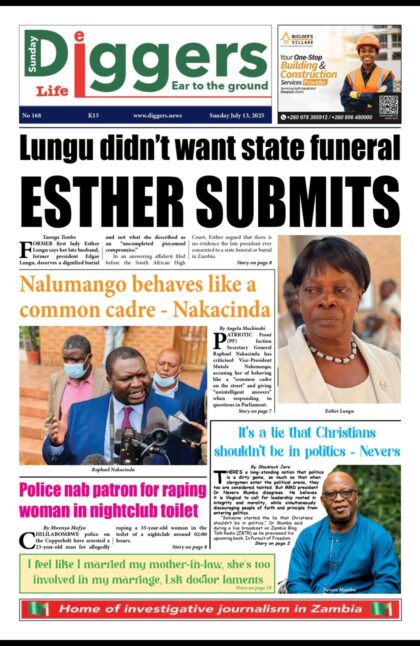Minister of Transport and Communications Brian Mushimba has disclosed that the rainfall forecast indicates that the 2018/2019 rainy season will start by late November this year and will be characterised by intervals of dry spells.
And Mushimba says government has been installing automated weather stations across the country to move away from the manual ones that had been giving some of the inaccurate information.
Giving a ministerial statement in Parliament Friday, Mushimba said the 2018/2019 rainfall forecast indicated that much of Zambia was likely to receive normal to below normal rainfall during the 2018/2019 rainy season.
“The 2018/2019 rainfall forecast generally indicate that much of Zambia is likely to receive normal to below normal rainfall during the 2018/2019 rainy season. The rainy season is likely to start by late November over most parts of the country and may be characterised by intervals of dry spells. However, the Northern parts of Zambia are likely to start experiencing thunder storms and showers this month. There is a high chance that most of the rainfall will be received in December, January and February countrywide. There is also a likelihood of below normal rainfall in March 2019 indicating an early ending of the 2018/2019 rainy season especially over the Southern half of the country,” he said.
“Lusaka and below will have normal to below normal rainfall. There will be prolonged dry spells and activity such as power generation, we are going to have challenges because the dams may not fill up as much as we expect.”
He urged farmers and other stakeholders to regularly get in touch with his ministry and the Ministry of Agriculture to access meteorological forecast.
“I wish to urge our farmers and other stakeholders to regularly get in touch with my ministry and Ministry of Agriculture to access meteorological forecast and updates that are made available. The 2018/2019 rainfall season forecast will be categorised into four periods of three months each. The first period from October, November, December 2018, there is a high likelihood of recording normal to below normal rainfall over much of Zambia, except for North-Eastern parts of the country which is like to receive normal to above normal rainfall during this period,” said Mushimba.
He disclosed that the 2018/2019 season may also experience floods, infrastructure damage, increased chance of disease outbreak like cholera, dysentery and typhoid and occurrence of agricultural pests across the country.
Mushimba advised the public to take necessary precautions to avoid loss of lives and property.
“Every season is characterised by wide ranging implications on the social, economic sectors. I wish to inform the nation that the 2018/2019 rainy season, may experience dry spells, insufficient water for domestic consumption, agricultural and also energy production among others, floods, flash floods especially in prone areas, infrastructure damage especially to civil structures such as roads, bridges, increase chance of disease outbreak such as cholera, dysentery and typhoid and occurrence of agricultural pests across the country. Let me advice the general public to take all the necessary precautions to avoid loss of lives and property until the end of the rainy season,” he said.
He further urged farmers to seek guidance from the Ministry of Agriculture on when to plant, what to plant and crop management.
Asked by Kabwe Central PF member of parliament Tutwa Ngulube how credible that information was, given that farmers had been misled in the past by such warnings, Mushimba said government had been installing more automated weather stations, moving away from the manual stations that had been giving some of the inaccurate information alluded to.
He added regular updates were required because they gathered information in quantum.
“Regular updates are required because we gather the information in quantum. When we see that this month is going to have more rain than the next, we will make sure that we provide that information. But the volumes, usually we are very accurate with that. This year we have installed 20 automated weather stations across the country, we are doing eight more before the end of the year, next year we are installing 30 additional automated weather stations,” said Mushimba.



















